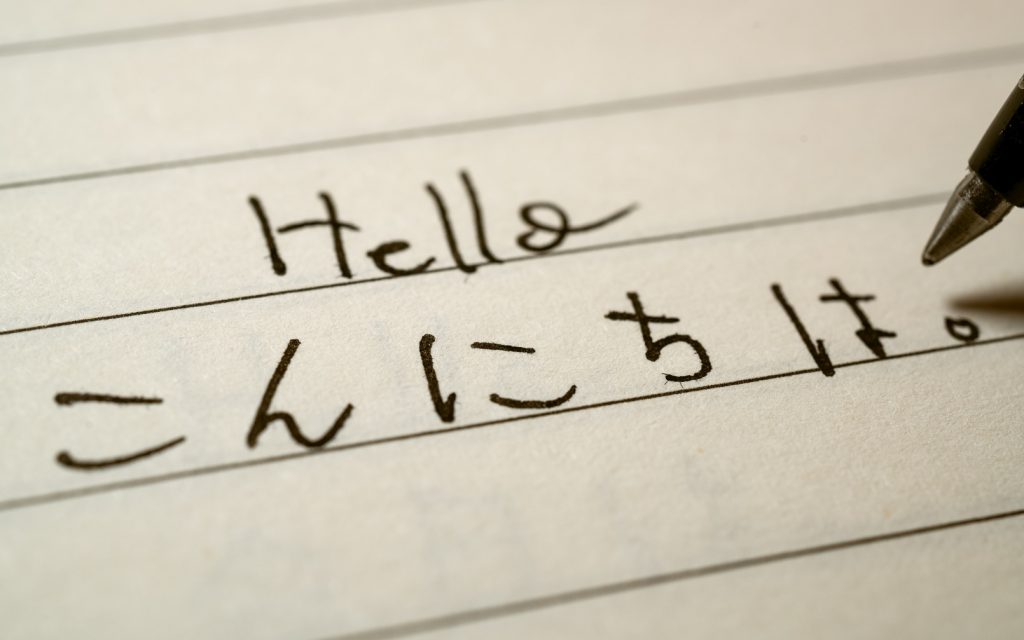No language is easy. Not really. That said, the difficulties of learning a particular language are often exaggerated. Whenever I mention that I study Japanese, most people look horrified. “That must be so difficult!” “How long does it take to learn?” “Is that even a real language?!”
Japanese is, for the most part, the polar opposite of English. It doesn’t even use the same writing system! Due to a vast difference in the most basic aspects of the two languages, Japanese can seem not only complicated, but also daunting. That being said, not all is pain and suffering.
In some ways, Japanese is actually simpler than English. Other times, similarities between English and Japanese can be a big help to learners. Either way, it’s never a bad idea to think about the positives. So let’s forget about what’s hard, and focus on what actually makes Japanese easy to learn.

1. Optional Words
In English, you can omit verbs if context is understood from other sentences. In Japanese, subjects and objects are also optional.
Verb omitted:
「誰が今日の晩ご飯を作るの?(だれが きょうの ばんごはんをつくるの?)」
“Who’s going to make dinner tonight?”
「私です!(わたしです!)」
“I am!” (It’s me!)
Subject omitted:
「今、何してるの?(いま、なに してるの?)」
“What (are you) doing now?”
「泳いでる。(およいでる。)」
“(I am) swimming.”
This makes for subtle, nuanced language that you can speak quickly once you’re accustomed to the structure of sentences and the ways in which people make up for a lack of subject. Often, Japanese conversations will consist of one-word sentences thrown back and forth, with a depth of meaning buried underneath.
2. (Similar) Parts of Speech
There are parts of speech. That’s really helpful. There are the same parts of speech as in English: verb, noun, adjective and adverb, plus all the other itty-bitties:
Noun: 花 (はな) — flower
Adjective: 美しい (うつくしい) — beautiful
Adverb: 早く (はやく) — early
Verb: 食べる (たべる) — to eat
Pronoun: 彼女 (かのじょ) — she
Pre/postposition: で — at/in, に — by/for
You might have noticed above that prepositions become postpositions (Japanese prepositions come after the word to which they refer).
オーストラリアで魚にキスされて、びっくりした。
In Australia, I was kissed by a fish and I was surprised.
In the above example, there are two prepositions (“in” and “by”), and in the Japanese sentence, they come after the words “Australia” and “a fish,” making them postpositions. But otherwise, Japanese parts of speech function much like their English counterparts.
3. Set Phrases
There are probably set phrases in every language, so this seems obvious. It can really help, however, to remember this when you start to learn Japanese, or even when you become really advanced.
You’ll hear a phrase, try and decipher the meaning, and maybe wonder why it’s used the way it is, but when you get into something like business Japanese, this can be time-consuming, as there’s often quite a difference between what a phrase means literally and figuratively.
You can make it much easier on yourself by simply learning set phrases to start with.
For example:
ペンを下さい。
A pen, please. / May I have a pen? (Hand me down a pen.)
大変お世話になりました。
Thank you very much. (I greatly became taken care of.)
Learning set phrases is at least as useful as building a base of vocabulary: They’ll take you successfully through many conversations, and once you feel more secure with the language, it’s interesting to break them down and find out why they mean what they mean!
4. Gender Neutrality
Aside from a few nouns (often referring to people), English doesn’t change word form based on gender. Japanese is similar. In pronouns, there are two cases of gender-specific words: third person (“she,” “he” and “they”) and first person (“I”). This last is unusual. There are gender-specific options for referring to oneself:
Men:
俺 (おれ)
僕 (ぼく)
Women:
あたし
That being said, the gender-neutral option, 私 (わたし, watashi / わたくし, watakushi), is not only more polite, it’s far more common. There are the basic “boy,” “girl,” “son,” “daughter” and so on, but otherwise, gender is omitted from nouns and adjectives.
俳優 (はいゆう) — actor
女優 (じょゆう) — actress
若い男の子 (わかい おとこのこ) — a young boy
可愛い女の子 (かわいい おんなのこ) — a cute girl
キャビンアテンダント (きゃびん あてんだんと) — cabin attendant
Learning nouns and adjectives becomes much easier with this in mind, because for adjectives you’ll only need to remember one form, and for nouns, you’ll never have to worry about whether it’s masculine, feminine, neuter or the CEO.
In some ways, due to the aspects described above, Japanese is a very subtle, nuanced language while also being at least as flowing and organic as English. There is a structure, but it’s light like rice wine vinegar, not heavy like blue cheese. I hope that by viewing the language through a “big picture” lens, and seeing that it’s sometimes pretty easy, you can now approach it more confidently!










